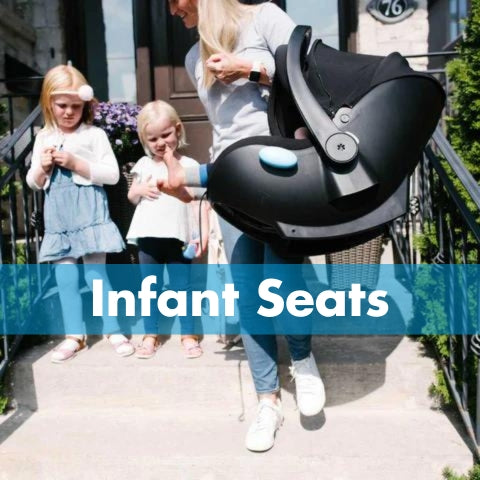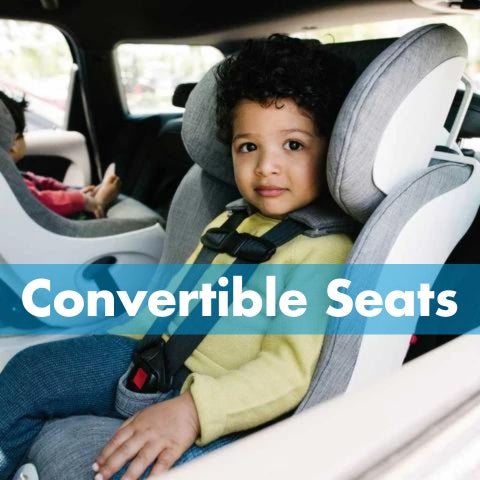Here at Clek, we’re parents too. That’s why safety has always been our number one priority. But as parents, we all expect more than just talk. That’s why we made the decision early on to publicly publish our crash test results. After all, what better way to demonstrate our commitment to going above and beyond when it comes to the safety of our kids and yours?
Yet, while seeing how much Clek car seats exceed standards by can be reassuring, it can also lead to a whole bunch of new questions. How exactly does crash testing work? And what do all those numbers mean anyway?
So, we’re taking a deep dive to help answer those questions and more. Buckle up and get ready for the ride!
How Does Crash Testing Work for Kids Car Seats?
Crash testing – also referred to as dynamic testing - involves properly securing a crash test dummy into a car seat that is properly installed on the crash test bench. The test bench is then accelerated and decelerated at a specific speed to simulate a frontal collision at 30 mph (48 km/hr).
Did you notice that the word “properly” showed up a few times there? That’s because all of the details - from the clothing the dummy is wearing, to the tightness of the harness, to the position of the chest clip, to the tightness of the vehicle belt or LATCH/UAS belt - are regulated by federal standards. This is important, because it allows for the results of the crash test to be repeated, even when done at different lab facilities.
Did You Know?
Crash test dummies have sensors in them that pick up and record different values during a crash test. The values that are recorded, along with other measurements taken during a crash test, allow a manufacturer to evaluate whether a crash test meets the federal standard.
While that may sound simple, the whole process is anything but. Many crash tests can be performed before a seat ever hits the market. For instance, manufacturers may run simulated crash tests in computer programs during the design and development of a new product. Others may wait until they have a prototype seat available for their first crash test. Early crash tests may also be done for research purposes. For instance, they may help an engineering team determine what design areas they’ll focus on improving, or help them decide whether a potential feature will be beneficial or not.
Of course, all the required crash tests must be completed BEFORE any seats are shipped to customers. Manufacturers must also keep a record of their crash test data to supply to the regulating agency (the NHTSA in the US, or Transport Canada in Canada).
Making Sense of Crash Test Results
The values we share in our crash test results -- just a few of the numerous data points collected during crash testing – are compared against the standards set by regulatory agencies. Generally speaking, the more “distance” between the measured result and the limit of the standard, the larger the amount a seat exceeds standards by (as seen in the example below).

Different types of seats have different types of measurements taken during crash testing. For example, some values are measured for rear-facing seats that aren’t measured for forward-facing seats or booster seats, and vice versa. These measurements are meant to reflect whether the movement of the seat, and in turn the movement of the dummy in the seat, shows any increased risk for injury.
Wondering how to know if your seat meets federal standards?
The federal standards that all child restraints and booster seats must meet provide for a scientific way of making sure that all seats available for purchase provide the same minimum level of protection. They also ensure that the components of the seat work the way they are supposed to. Fortunately, it’s easy to know if your seat meets federal standards.
In Canada
Check for the National Safety Mark. This sticker indicates the exact CMVSS standard the car seat has been certified to and shows that it’s legal for use in Canada.

In the United States
Check for the Statement of Compliance. This statement indicates that the car seat has been tested and certified to meet FMVSS 213 standards.

Crash Testing in Action
Now that we understand a bit about what crash testing is, let’s look at a video to get an idea of what a crash test looks like. The video below shows two crash tests side by side to give a visual of how much the load leg changes the movement of the Liing in a collision.
You might be surprised to know that the seat passes testing in both instances here, despite the very noticeable reduction in movement with the load leg in use. While using the load leg undeniably improves the seat’s performance, that doesn’t mean it’s otherwise unsafe. It’s simply a case of safe and safer.
Beyond Crash Testing
In addition to the crash testing portion, there are also static testing requirements. As the name implies, the static testing requirements are standards that are not related to the crash testing but are important to confirm the integrity of the components of a car seat.
For example, the harness buckle has standards around the minimum and maximum amount of pressure that is needed to release the harness both before and after crash-testing has been done. This helps ensure that it’s not too easy for a child to unbuckle themselves, but also that it’s possible to still unfasten the buckle after a crash.

In Canada, all forward-facing and rear-facing child restraints are also required to pass inversion testing. This is what allows for a car seat to be certified for use on aircraft. In the US, this testing is optional. When complete, a manufacturer will place either the FAA sticker, or an additional statement on the labels that states that the seat is approved for use on aircraft. Booster seats do not undergo inversion testing. This is because airplanes are equipped with lap-only belts, which are not approved for use with booster seats.
So, what testing do Clek seats undergo? As well as the federally required compliance testing, which represents at least 95% of all real-world crashes, we go the extra mile by putting our seats through more rigorous optional trials. For example, we perform crash testing at NCAP speeds, which simulates the higher forces experienced in less rare, but more extreme crashes. Add on to that side-impact testing and other extensive due-care tests, which evaluate conditions outside of compliance testing. These include structural integrity for maximum occupant weight and various installation positions, the effect of extreme temperatures, misuse conditions, and much more.

Our goal here isn’t to put down child restraints that only meet the minimum requirements. It’s simply to educate and empower parents to make the most informed decisions when it comes to their children’s safety behind the wheel.
For maximum safety performance, here are a few things to look for when choosing your kiddo’s car seat:
- Equipped with motion-limiting safety features, like a load leg, an anti-rebound bar, or a rear-facing tether.
- Allows for extended rear-facing. Children should remain rear-facing as long as possible, ideally until they reach the maximum height or weight allowance for their car seat.
- Provides a tight, secure installation to the vehicle seat. The less play there is between the car seat and the vehicle seat, the less the car seat moves in a collision. Features like built-in lock offs or rigid LATCH (UAS) can help provide a secure installation.
- Designed with side impact protection in mind; lined with EPP foam (instead of EPS foam), has a protective headrest, and has features, like rigid LATCH (UAS) or anti-rebound bars, which increase stability in a side impact.
Keep in mind that regardless of which added safety features a car seat provides, it has to properly fit your child, your vehicle, and MUST ALWAYS be installed and used properly in order be safe.
Unsure? Contact a local child passenger safety technician to help you determine if your seat meets your family’s needs.
To find a tech near you, please visit:
Canada - https://www.cpsac.org/find-a-tech/
US - https://cert.safekids.org/.




